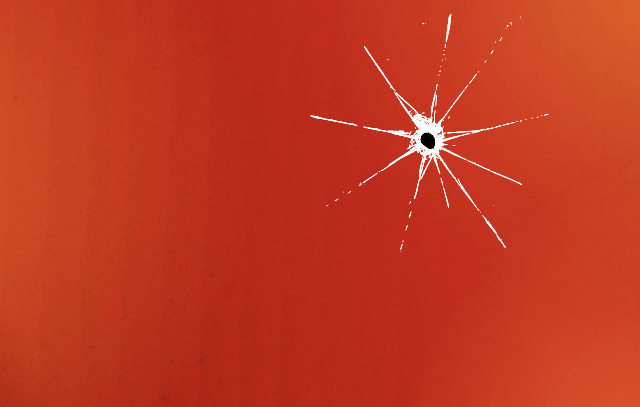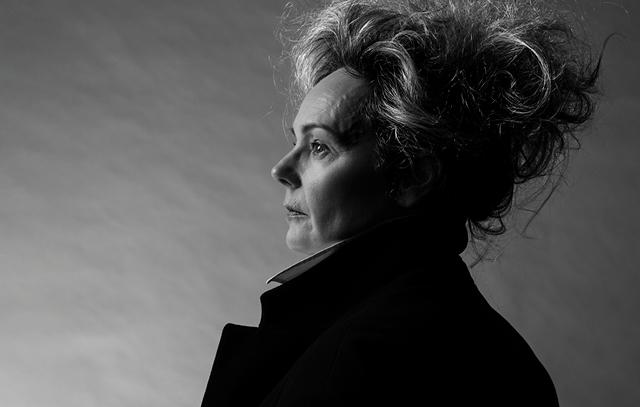Six months in Pihlajisto
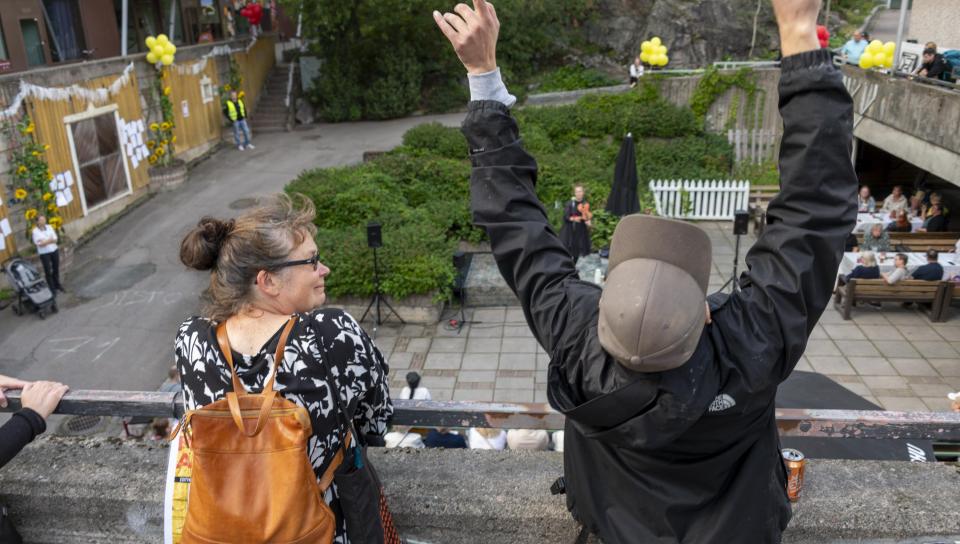
Five stories about the Finnish National Theatre community projects told by an intern
Introduction
March 2023
We sit at a white oval baroque table in the Finnish National Theatre's temporary office. This elegant table that invites shared dialogue is the first thing that greets every visitor to the Communities and Engagement (Yhteisöt ja Osallisuus) department. This department has been created to combine the previously separate units of the Touring stage (Kiertuenäyttämö), the FNT’s Youth Theatre (Nuorten Kansallisteatteri) and the Audience Outreach (Yleisötyö) section. I have been sent here as an intern by the Employment Office, and I will join the team of creative producer Jeroen Sebrechts and freelance director and artist Eveliina Heinonen, who will be working in the Pihlajisto and Pihlajamäki districts within the Helsinki Model project.
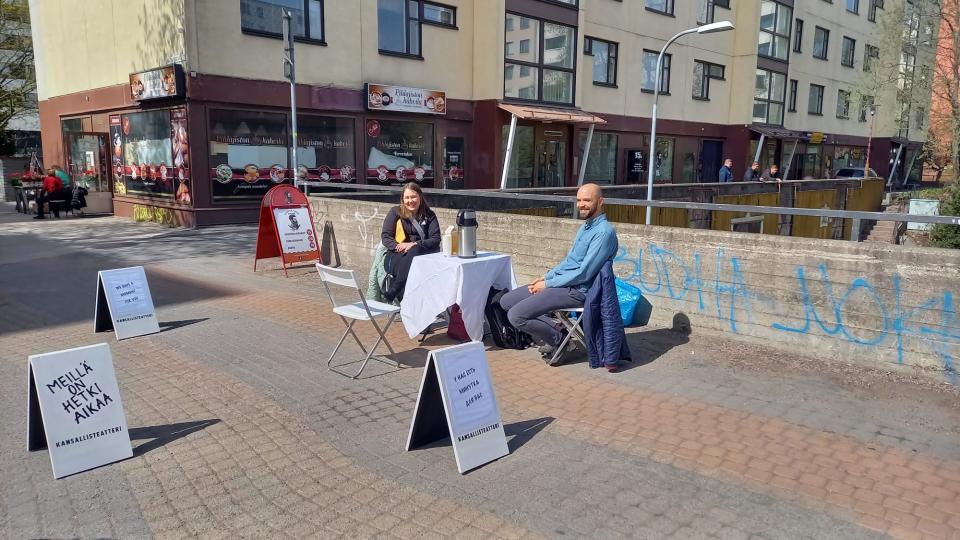
As we begin planning a project, we quickly come to the question of “Why is the National Theatre doing this?” It is only possible to undertake any action by knowing its objectives and what our predecessors have managed to do. The most obvious answer is that it is a good, helpful thing to do. The mission of the Helsinki Model is to provide access to culture to people who, for various reasons, have been deprived of it. The Helsinki Model is based on the model of the French city of Lyon. According to the logic of this project, If culture is supported by public funding, then it should reach as many members of that public community as possible. If the mountain will not come to Mohammed, Mohammed will go to the mountain. Various theatres, museums and other cultural institutions have been included in this project at different times, and the National Theatre is one of them.
"The mission of the Helsinki Model is to provide access to culture to people who, for various reasons, have been deprived of it."
But why is the National Theatre doing this? – the question continued to be raised at every weekly meeting. It sometimes tormented me to the point where I wanted to say, "Why not?" However, the mission articulated by the authors of the Model is not identical to the mission of the theatre.
One can examine the issue armed with theory. For example, recall the significant "turns" formulated by Anglophone and German-speaking theorists for European culture. In the 1960's, Richard Schechner initiated his practice and theorized the “performative turn”. What is essential for us in Schechner's ideas is that he challenged conventional definitions of theatre, ritual and performance, which gave greater freedom of form. From this time onwards, an active and meaningful interpenetration between different forms of modern art, theatre and dance, anthropology, ritual, performance in everyday life, rites of passage, play, psychotherapy and so on began. In her book Transformative Power of the Performance, Erica Fischer-Lichte considered physicality as the primary mechanism for perceiving theatre as 'an art event'. She reflects on the unique materiality of theatre, which includes not so much scenery and other objects but sound, space, and the physicality of the spectators and performers.
Another essential phase is the "social turn", a concept formulated by Claire Bishop in the early 2000s, in which importance is given to thinking about art as an agent of social transformation and to reflections on collective and collaborative creativity. Since then, a pandemic has occurred, and the discussion about the politics of spectatorship and the nature of live performance has not stopped evolving. Discussions on the spaces of theatre, the ethics of live art and, of course, the purpose of art have continued unabated, culminating in the "educational turn" and the "ethical turn" in art theory. The theory interprets contemporary art as a relentlessly evolving process, responsive to those challenges that major art institutions simply cannot keep up with. So is it necessary to impose social projects on repertory theatre if there are neoliberal mechanisms for managing temporary projects based on short-term grants? Such considerations give rise to newer and newer questions, to which, of course, there are no unambiguous answers. For my part, I can competently answer only one – why am I doing this?
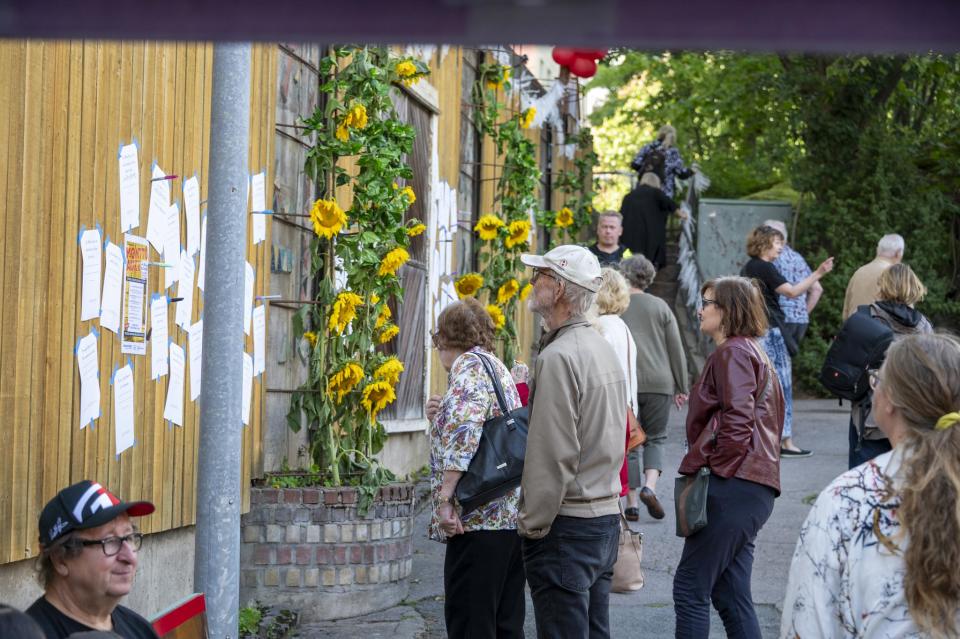
1. Down the "Monttu" slope
26 August 2023, 1 pm
"Hello, we've come to join the ‘Monttu Auki’ party!" These are the ladies from the elderly care home Sointu. Tidy and austere as ever, they greet me next to the ‘Monttu’, which is what they call the unnamed boilerplate square below street level in the Pihlajisto shopping centre. This is where we have chosen to hold our second event in the area. The Finnish National Theatre's 2023 Model project involves two courtyard celebrations. The first was at the end of June, just in Sointu's courtyard. The ladies joining us today were participants in Eveliina's workshops, which she led for three months, and I managed to assist her with my limited Finnish. It was an unforgettable experience. The ladies spoke about their childhood, about their holidays and relatives. These stories gave birth to a poetic text and a small performance, which we staged in a fortnight with the children in a multi-lingual theatre camp. Many of these ladies have difficulty walking and getting around with walkers. But here they are. To say I'm proud is an understatement. Like a proper usher of the National Theatre, I lead them down the hill to the audience seats of the ‘Monttu Auki’ festival.
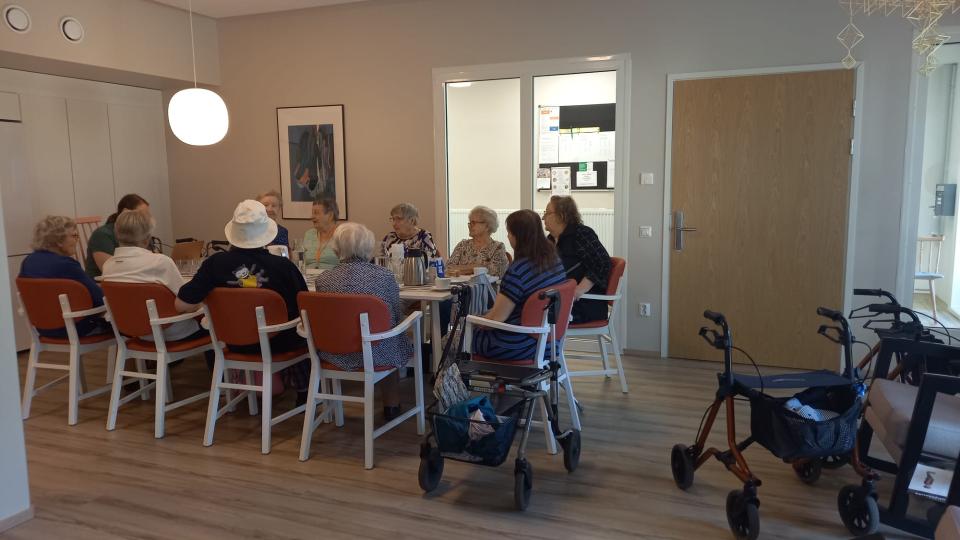
We started working in Pihlajisto in March. We walked around the neighbourhood, talking to people, eating at local cafes, and sitting in a local bar. A place locals call ‘Monttu’, a ‘pit’, is the area below street level and adjacent to the retail pavilion with the Jisto bar. It immediately caught the attention of Jeroen and then the whole team – if you look at this square from above, everything that happens below seems to be a ready-made performance. Later, it turned out that many people avoided this place, calling it dangerous and unpleasant. It was associated with the alcohol, drunkenness and filth. But when we went down to this square, we found beautiful mosaics made by locals in the 90s, the remains of cosy woodwork and a very close-knit community, the regulars of Jisto bar.
"Race, language, religion, and just everyday habits were the things that kept our many new acquaintances in Pihlajisto away from each other."
Pihlajisto is a neighbourhood that needs more social spaces. This was mentioned to us by almost every resident we interviewed during our artistic research. Many disparate communities here live a stone's throw away from each other and hardly ever meet. It always amazes me how many factors can easily separate people. Race, language, religion, and just everyday habits were the things that kept our many new acquaintances in Pihlajisto away from each other. But on 26 August, at Monttu, they came together. That's why I was glowing like a copper basin, walking down the slope with the ladies. There, already sitting on the benches, were bar regulars, active citizens from the neighbourhood’s association of residents, Roma women who had told us before that they never dared to go downhill - into "not their" territory, families with children, and random passers-by. They were all there, from the MP to the district’s marginalized.
This picture of diversity stands for me closer to the concept of a nation than any auditorium of any of the national theatres I have seen.
2. Spoonbills and balloons
26 August 2023, 9.30 am
The morning of the event, I was angry. Clouds of dust were flying from under the mop I'd used to sweep Monttu's tiles fiercely. Why am I having to clean the place now, just a couple of hours before the festivities start, when cleaning should have been done last night? Cleaning Monttu was quite a risky part of this FNT project. We had hoped for volunteers from the community, but only our regular helpers V. and E. signed up to help. V. is a local artist and reciter, he helped us a lot with the children at the theatre camp, and now he's back to lend a hand. E. is a drummer musician, an active member of the Pihlajisto community. They are both great, but if Jeroen, the project producer, hadn’t persuaded the city to do a clean-up at Monttu, we four couldn’t have done it.
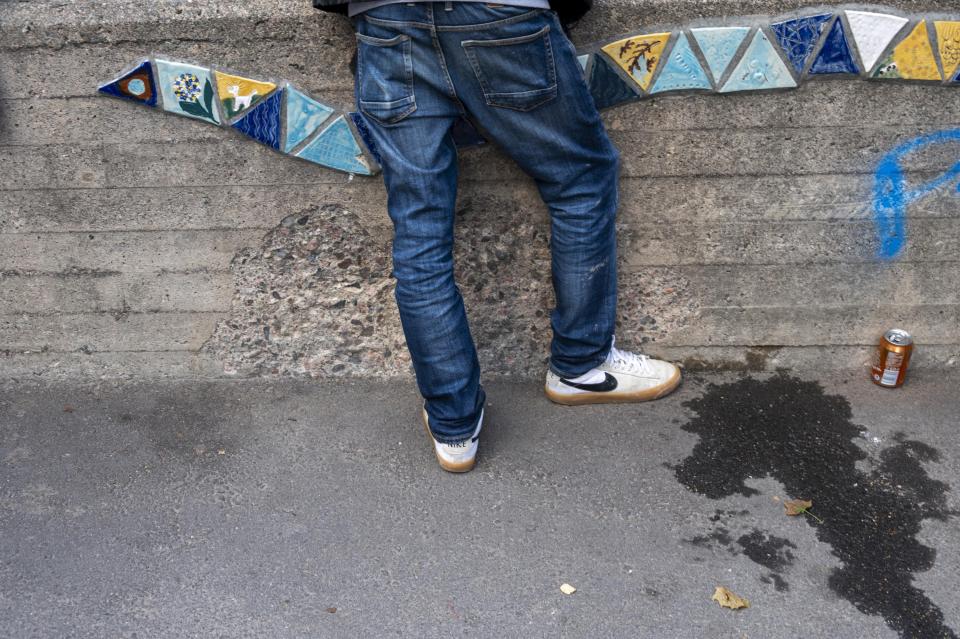
It turned out that the place had been a "no man's land", forgotten and therefore not cleaned for the last few years. So the city did clean it, but even so, for three hours yesterday, we were licking up the remnants of whatever dirt the city services had missed. V. and I were weeding Monttu while Jeroen and E. hauled heavy bags for recycling. P. lent us his cleaning equipment, and he was the only one from the bar company who came to help us during the cleaning. Although, to be honest, much of that help consisted of sipping beer and having pleasant conversations. So why did he decide to clean the burdocks between the tiles with an electric trimmer now, when we need to decorate the grounds immediately?
Yes, I was cross about P.'s delayed reaction, but actually, it was great! In the spring, while sucking on a cigarette and tossing it under his feet, P. told Jeroen how little the city does for the place. As a janitor, he must clean up elsewhere, but he didn’t notice how he littered near his house. Now he's engaged in the process and sees an opportunity to improve on Monttu when we've already decided we've beautified Monttu as much as we could.
The work of appropriating space is complex and lengthy. Do we do much truly to become masters of ‘our’ spaces? What is up to us, and what is up to the faceless ‘city’? This work of locals appropriating their space started long before ‘Monttu Auki’. Perhaps it was the outcome of previous National Theatre teams in the area, which gave us a resource for community consolidation. Or maybe it began even earlier, in the 1990s, when local people, angered and hurt by the notoriety of their neighbourhood, organized a vast effort to beautify and improve it. It was then, for example, that a series of mosaics on the theme of the Kalevala was created.
The ‘Monttu auki’ event (including the process of cleaning and decorating Monttu), I perceive in no other way than as a reenactment of the party, which was organized by the local community to celebrate the renovation of Monttu in 1995.
Read morE ABOUT THE 1995 EVENT
In the ‘Monttu auki’ programme, we worked with this memory - the memory of place - through the testimonies of people who were part of those events. Eveliina wrote a beautiful speech that opened the festival itself and, at the same time, reopened Monttu. She talked about what had happened to the place in the 50 years of its existence. In this speech, Monttu appeared as a living being, experiencing ups and downs, dependent on the people around it, and influencing their lives. In another part of the programme, Eveliina organized an open discussion with the people of Pihlajisto. It turned out that not only we, the visitors of this place, have many kind words to say about it. The locals also love and appreciate it as part of their ‘home’.
But why is this home so neglected?
The community members were moved that day, when P. was clearing Monttu of burdocks. It gives me hope for change in the face of Monttu. Will the residents have the will to do this work? In the 1990's their predecessors planted flowers and tended the ‘cauldron’ for years. When these people left, no one new took their place. Is now the time for that?
3. "These are not Finnish children."
17.06.2023, 4 pm
When I entered the living room of the senior care home Sointu, I saw K. squeezed into a chair; he was sobbing. The other kids from our camp crowded around him and tried to allay his apprehension. Eveliina, the project director, asked everyone to step aside and started talking to K. "I won't go on stage," he sobbed, "too many people there”.
К. is 11 years old, and he has a wild imagination. When he first went to the theatre camp where we were working on a play based on the story of the Sointu people, he immediately stated that he had attended a theatre group for several years. Cheerful, mischievous and brave, K.'s fragility was only revealed just before the performance. I don't know what exactly Eveliina said to him then, but K. performed and received well-deserved applause and praise from the whole team.
He wasn't the only one who outdid himself that day. "We did not think that N. could perform like she did today," – N.’s parents admitted. She, the soul of our temporary team, melted the hearts of even the most unapproachable teenagers. Tactile, sensitive, mobile, N. did not sit still for a second. After two weeks, N. handled a 5-minute scene, worked confidently in a team, and was rarely distracted from her role. Although at first she preferred English, she quickly switched to Finnish — of course, because she liked K. and wanted to talk to him all the time!

If not for this project and the brand of the Finnish National Theatre, which is certainly trusted, we would never have been able to bring these children together - Finnish-Russian-English speaking, with very different social backgrounds, different ages (7-12 years old) and different communication skills. Many of them are just beginning their introduction to the world of art. Many of them prefer to communicate within their own linguistic community. By the end of the first week of our summer camp, we thought this project was a failure, and we wouldn't get a group or a performance. But by the end of the second week, everyone was playing together – even those with no common language. At the show, everyone felt the joy of joint creative work, and we were genuinely sorry to say goodbye to each other. The project ended when the process of getting closer to each other, actual integration, had just begun.
"But these are not Finnish children," one of the residents of Sointu House said in a private conversation. "Well," I said in reply to my interlocutor, "the thing is, these ARE Finnish children”.
The remark of the Sointu lady and the comment of N.'s parents about their daughter's success became, for me, the striking reviews of the performance in Sointu. Artists and theorists of socially engaged art constantly struggle with the question of the artistic component of their products. ‘Artistry’ is a category that tacitly relegates projects like ours to a secondary place in the hierarchy of artistic creation. But what defines ‘artistry’? Is it appropriate to operate with these concepts today at all? Сompleteness of form? Beauty? Or perhaps the quality of the changes produced, the ‘trace’ that a statement leaves on a person? Our art event did not have the ‘completeness’ that the author's or director's view often provides but was a collaborative, processual art. We can write and reflect as much as we like about our work and the need for 'diversity', but only living it together gives the experience of change.
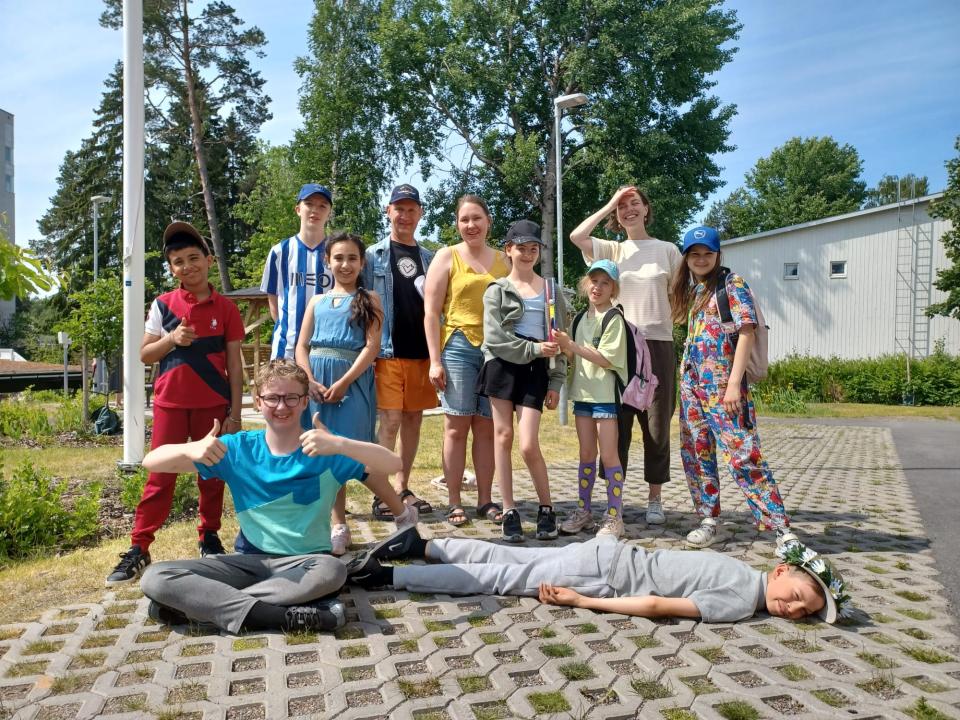
For the children, the experience of working with the stories of the senior people became an encounter with the history and culture of Finland through its speakers. For the ladies from Sointu, opening the doors of their home was an occasion to see real, not imaginary, Finnish children. I would like to believe that N., K. and the other children also learnt something new about themselves. It doesn't matter who or what exactly becomes your guide to the world of art - a play by a famous director, a dance by a celebrated ballet master, or some guys in black Finnish National Theatre hoodies who come into your yard saying, "Let's clean this Monttu up and make a party!"
I look at N. and K. and imagine that all hierarchies in art have been abolished. There are no more ‘performances’ and ‘street events’ but simply theatre — an encounter/revelation/event that may or may not happen to different people simultaneously in the same place.
4. The theatre's encounter with itself
26.06.2023, 4:15 pm
"I love you, you love meee, we gonna have a big faaaaamily, oh ye!
I love youuuuuuuuu and you love me, we've gonna havea big family oh yeeeee!!!!"
I'm watching a snippet of the performance "Karpolla on asiaa” from above, leaning over Monttu's concrete curb. It is a work by students of the Theatre Academy, under the direction of Kristian Smeds, consisting of documentary portraits of people all over Finland, adapted from a legendary TV show. Actress Eeva Mäkinen is performing, but it's really a guy who is appearing in front of me. He's sitting in a drummer's pose and frantically pounding on an instrument, skillfully wielding his sticks and gasping out the words of his obscure song. I can usually see the ‘seams’ of a role because I am a critic and have a good eye. When you don't understand the language, you can see these seams even better – intonations, gestures, movement patterns, rhythm. I see it all usually, but not this time – now, unexpectedly, there was that miracle that I always wait for in the theatre and rarely get. The miracle of theatrical transformation. My rational side understands and sees the actress, but professional scepticism cannot prevail over emotion because I see something else – I see the fate of a man, comical and tragic at the same time; I see hopes and their unfulfillment, I see stupidity, tenderness, pain and joy – all the fragility of our lives. And I also see art. I realize something is missing only when I wake up from this scene. What is missing is the drunken shouting that used to accompany the last hour of the festival. But the guy who was a troublemaker is silent now, absorbed with his eyes in what is happening on the ‘stage’. There is an unexpected seriousness in his expressionless gaze. "She is awesome", S., our volunteer and public-talk participant, exhales beside me. "She is…. just awesome," she says again, unable, just like me, to articulate the feelings that overwhelm us both.
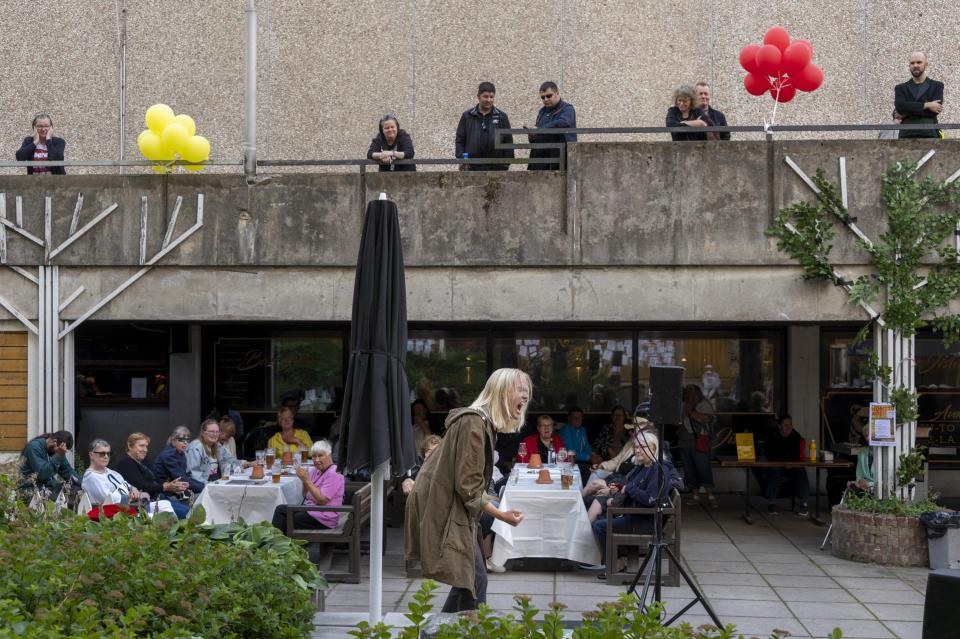
I think about how unexpected theatre can be. Here in Monttu, I wasn't expecting this at all, although I didn't doubt the actors' professionalism. It made sense to me that people would enjoy the circus - who doesn't love it? And the rope dancer Vilhelmiina Sinervo was indeed beautiful. I also assumed that a musical performance would inspire the audience, and Vysotski’s songs (Vysotskin Laulut) proved to be beyond expectations. But for the dramatic theatre, I was afraid of monologues in combination with a lack of lights and scenery, open space, and a bar. However, it was here, where it was least expected, that the theatre revealed itself with the most tremendous force.
"three actors will come to the square, put a footcloth on the ground and start playing – and there is already theatre"
We are used to going to beautiful modern or ancient halls for theatre impressions, to endure the ritual of the beginning of the action - buffet - final applause, to evaluate costumes, dramaturgy, scenery and music. But theatre is, above all, the magic of a live actor's presence. And when an actor has nothing to hide behind, we finally have a chance to see the essence of theatre. Nemirovich-Danchenko, the great co-author of Stanislavsky, is credited with saying that "three actors will come to the square, put a footcloth on the ground and start playing – and there is already theatre". This definition of theatre was embodied in Monttu. A low stage covered with a carpet and an actress on it who transforms with the sheer force of her talent and captivates the audience with her art, even penetrating the alcohol-clouded consciousness of my neighbour.
For the theatre, this kind of activity is not only about reaching new audiences. It is also crucial for the theatre to come out of its building with columns, to reinvent itself and test its strength repeatedly. This was understood at the beginning of the XXth century by avant-garde theatre artists who created the first studio theatres, made historical reconstructions of ancient theatres and experimented with medieval forms of street spectacle. Peter Brook, who travelled with his international troupe to African villages, and the avant-gardists of the 60's, who made performances in galleries, abandoned buildings and on rooftops, understood this. There are plenty of examples - the latest spatial conquests are online theatre and theatre that comes directly to the viewer's home. Going beyond one's limits seems a good approach for any cultural institution today. Nowadays traditional theatre walls can also be seen to enclose a space in which the given activity is 'site-specific', i.e. one that must be justified and conceptualized.
5. Theatre and the sustainable effect?
May 2023
"It's been going on for ten years now," the woman laughs, "ten years since I came to work at the Alepa store, and I was told, you know, this building is about to be demolished, and a shopping centre will be built in its place”. We conduct artistic research — a study using the method of social urbanism. We ask neighbourhood residents what they think about Monttu and how they see it. The woman I'm talking to no longer believes anything will change in this area. She's afraid of losing her job, but she also thinks the Alepa building looks ugly and out of step with the times.
June 2023.
Our team meets Tiia. Tiia, a woman with delicate features and a friendly look, is the architect-planner of Pihlajisto in the service of Helsinki city. The city is preparing a significant renovation of Pihlajisto, and Tiia is making efforts to include active residents in the planning of the space. One option in the current planning is to raise the level of the Monttu square to street level. In this way, Monttu could cease to exist as it is now. Tiia says that transforming the area is a complicated process that could take a long time. The city can't do the renovation without the participation of gatekeepers - the owners of the buildings. And bringing everyone together to decide Monttu's fate is now very hard.
Why shouldn't art be the party that mediates a case everyone wants to solve? We have succeeded in drawing everyone's attention to Monttu for one day, but what if sustaining this effect were possible? We know how to involve the residents in the planning of the area.
But.
Why does the National Theatre have to do this?
Our part of the project is ending, and with it, my internship. I never considered myself an artist, but now all these six months have been an act of intense (I would say artistic) presence in this place for our group. It's only now that our performance has begun to take shape.
Afterword
Riikka Purra said in a pre-election debates that culture is a luxury. The fact that her party has made it into the current government should indicate that many people agree. What did she mean by saying that? Is experiencing deep emotions, laughter and tears a luxury? Or building connections with the past and reflecting on the future? Or searching for personal identity? Or bringing together people who fear each other simply because they have no place or reason to meet? I wonder if the theatre that the Communities and Engagement department is creating — the socially responsible theatre that is not afraid to go down into the most bubbling "pit" and struggles to reach out to every specific person — is it also an expendable luxury?
Theatre has a huge potential — it activates perception, offers intellectual and emotional stimulus, and allows us to become fully engaged, mentally and physically, in the moment – a moment one can share with others. Although I know from experience that theatre cannot stop war and violence, I also know what a tremendous power it has. In times of crisis, building sociality can be a life-saving practice and the best contribution to the future. The only” luxury” that culture and theatre, in particular, could be associated with is the luxury of being challenged time after time, the right to test and question the most persistent stereotypes.
Read more about the FNT's projects in Pihlajamäki and Pihlajisto
***
I thank Jussi Lehtonen, Jeroen Sebrechts and Eva Buchwald for valuable comments and help in the process of preparing the text. I would also like to thank all participants in the Pihlajamäki-Pihlajisto projects 2023 who agreed to be mentioned in this text.
***
P.S. While preparing this text, we learnt that Pihlajisto-Viikinmäen asukasyhdistys is applying for a grant for the renovation of Monttu, inspired by the event.






